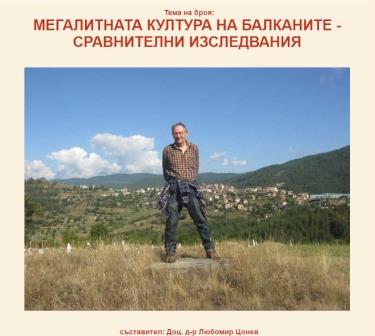ДЕВТАШЛАРИТЕ КРАЙ ПЛИСКА – ПРЕДЛОЖЕНИЕ ЗА РЕИНТЕРПРЕТАЦИЯ
THE DEVTASHLARI AROUND PLISKA STILL REQUIRE A PRECISE INTERPRETATION
Author(s): Lyubomir TsonevSubject(s): History, Anthropology, Social Sciences, Archaeology, Cultural history, Sociology, Ethnohistory, Local History / Microhistory, Social history, Ancient World, Prehistory
Published by: Асоциация за антропология, етнология и фолклористика ОНГЬЛ
Keywords: devtashlari; megalithic monuments; Bulgaria; menhirs; Balkan Peninsula; prehistory;
Summary/Abstract: The devtashlari are numerous objects of megalithic character. The official opinion interprets them as proto-Bulgarian monuments which are created in VII–VIII cent. AD. The author examines the devtashlari in two contexts. Compared with the early Christian architectural monuments of Byzantine 122 origin in Bulgarian lands (IV–VI cent. AD) as well as with the temples in the old Bulgarian capitals Pliska and Preslav (built in IX–X cent. AD) the devtashlari appear as extremely primitive objects. The official interpretation is shown to be impossible from the point of view of a normal architectural evolution. On the contrary, the devtashlari find their adequate place among the numerous monuments of rock-cut and megalithic character in Bulgaria originating from III–II millenium BC. So the present analysis gives a more convincing dating and interpretation of the devtashlari. The devtashlari are in fact classic menhirs. Some of them are grouped in rectangular grids exactly like the famous menhirs in Menec, Brittany, France. Such specific grouping happens very rarely in the megalithic world. The mechanical treatment of the devtashlari and the state of their surface are also identical with the Menec menhirs.
Journal: Електронно списание »Онгъл«
- Issue Year: 2017
- Issue No: 14
- Page Range: 107-122
- Page Count: 16
- Language: Bulgarian

